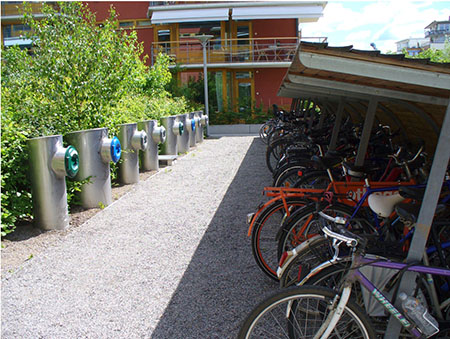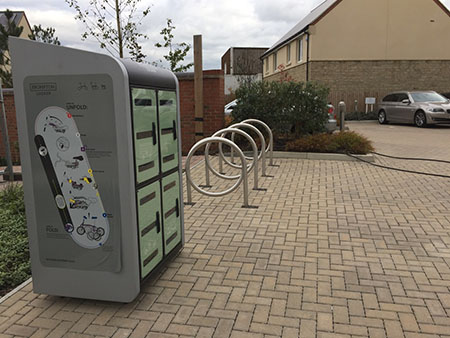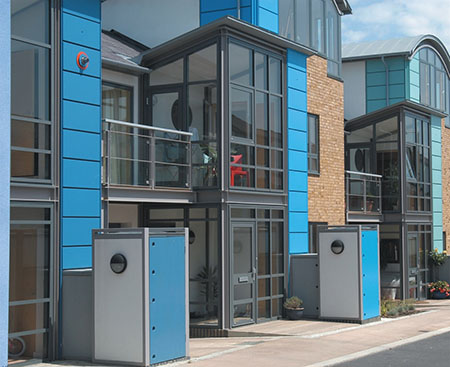Inform your design:
Indicate the location of bin storage area;
Use your character assessment to inform the design and choice of materials for your bin storage
p56. The quality of our streets and spaces can be undermined by the clutter of bins, bikes, and services if these are not properly designed into the building. Screening and enclosures, which can add to the character of a street frontage, are a useful tool in providing waste storage without detracting from the street scene. The provision and location of utility requirements should be considered at an early stage to minimise potential conflict and reduce the impact. Whilst most utilities run underground, they have an impact on where trees may be planted within the public realm. Those above ground, in the form of supply boxes, can be unsightly. When considering bin storage, imaginative solutions should be considered that incorporate storage as part of the front façade and provide visual screening from the street scene. When designing cycle storage, consider ease of access, as well as bicycle security, to ensure the facilities are used as intended.
Indicate the location of bin storage area;
Use your character assessment to inform the design and choice of materials for your bin storage
Prepare a plan indicating what type and size of amenity space has been provided for each residential unit;
Prepare a plan showing the location of bin storage areas and collection points and the access provided between the two, including ensuring adequate accessibility to bin storage for those with mobility issues and impairments;
Prepare a plan showing the routes for service vehicles to access each building/ dwelling, also known as a Swept Path Analysis or Vehicle Tracking Plan;
Provide design details of bin storage areas, utility boxes, cable runs and maintenance access points.
National Design Guide (2019)
National Design Code Part 1: The Coding Process (2021)
National Design Code Part 2: Guidance Notes (2021)
Building for a Healthy Life (2020)
Manual for Streets 1 (2007)
South Oxfordshire and Vale of White Horse District Councils’ wheeled bin policy and waste planning guidance (2015)
Waste management in buildings – code of practice, BS5906 (2005)




Ensure the scheme:
Note: All design principles are applicable to all scales of development unless otherwise specified; *minor applications, **major applications